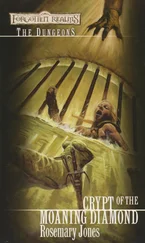Rundstedt later noted with regret:
I have been criticized because it was said that I delayed too long in committing my Panzer Divisions against the bridgehead. Although Panzer Lehr and the 12th SS Panzer Divisions were under my command I could not move them until I had received permission from Berlin… They hesitated all that night and the next morning were unable to make up their minds. Finally, at four o’clock in the afternoon on 6 June, twelve hours after I had made my request, I was told that I could use these Panzer Divisions. This meant that a counterattack could not be organised until the morning of 7 June. By then the bridgehead was over thirty hours old and it was too late.
Bitterly commenting on this inertia after the war Rundstedt, perhaps trying to salvage his own reputation, told his captors:
I was not allowed to use them without getting permission from the Führer in his headquarters on the Eastern Front. What did he know of the battle in Normandy? We rang up every few hours, but he refused until it was too late, until, in fact, you had your anti-tank guns and many tanks ashore. I practically had to ask him whether I was to put a sentry at the front or back of my headquarters.
At 1400 on the 6th Hitler released the 12th SS (allowed to move to Lisieux but not committed) and Panzer Lehr to von Rundstedt. General Dollmann, like Rundstedt, did not hear of this decision until 1600 either. It mattered little, as neither division would be able to intervene on D-Day.
Hauptmann Helmut Ritgen of the Panzer Lehr Division knew a golden opportunity had been lost:
From 6 June onwards, 21st Panzer had been thrown piecemeal into battle to counter the British airborne landings. This armoured attack towards the shore was halted prematurely when the British paratroopers landed in our rear. On D-Day night the British I Corps had captured a coastal strip six miles [10km] long though not yet very deep. In vain the exhausted German defenders looked for reinforcements but all local reserves had been used up.
C-in-C West had ordered increased readiness to move forward Panzergruppe West, which included 12th SS, Panzer Lehr, and the 17th SS Panzergrenadier Division. 12th SS Panzer was put under command of Army Group B and Kurt Meyer [commander 12th SS Panzergrenadier Regiment 25] led them towards a sector of the 711th Infantry Division east of the Orne. Movement was difficult because of air strikes and too many failures of radio sets.
Panzergruppe West was directed to become a combat command, but not under Rommel’s direct authority. When Schweppenburg finally got the order, he claimed he was dismayed at the muddled arrangements:
The chain of command from Panzergruppe West up was most unfortunate. Panzergruppe West was still under 7th Army. The decision to interpose another staff between Rommel and von Geyr may have been made by OB West because it was aware of the friendly relation between Panzergruppe West and the staff of 7th Army–the latter acting as a ‘buffer state’. At a moment when everything depended on rapid action, orders were issued to just two and three-quarters Panzer Divisions by the following headquarters: I SS Panzer Corps, Panzergruppe West, 7th Army at Le Mans, Army Group B, OB West, and OKW.
Clearly the situation was a complete mess and the Germans were to tie themselves in dreadful knots. Schweppenburg’s Panzergruppe West staff immediately found themselves involved in resisting the Allied invasion. He recalled:
On the morning of 7 June I was ordered to take over, with my staff, the sector on both sides of the Orne up to Tilly-sur-Suelles. I moved out immediately. After reaching Argentan, two conditions became evident, both of primary importance to the movement of Panzer forces. Enemy air action had thoroughly and skilfully destroyed those points along the main arteries where the roads narrowed within the defiles of villages and towns. Owing to the road net and the terrain, it was difficult even in daylight to find a bypass, and then only with considerable delay.
Rommel must have felt equally frustrated that the chain of command for his panzers ran via Schweppenburg to von Rundstedt. He exercised direct control for barely three days.
Pending the arrival of Panzergruppe West, as of 0400 on the 7th June, I SS Panzer Corps assumed command of 12th SS, 21st and Panzer Lehr. Dietrich became responsible for 7th Army’s armoured counterattack and was well aware that the burden of this operation would fall on the teenagers of the 12th SS.
Unfortunately the staff of I SS Panzer Corps did nothing to clarify the situation for the divisional commanders. Although the Corps ordered an attack toward Courseulles-sur-Mer, in the event Panzer Lehr drifted toward Bayeux and the 12th SS moved northwest of Caen. At the time the I SS Panzer Corps was just starting its 438-mile (700km) journey from Belgium. Schweppenburg lamented I SS Panzer Corps’ dithering:
It is not known why I SS Panzer Corps wavered, but probably the divergent influence of higher staffs must share the blame. If one has to pass final judgment on the conduct of this Corps, it should be stated that it has missed the psychological moment – and the bus. It was still possible in the morning of 8 June to deal the British a severe blow in the vicinity of Courseulles-sur-Mer. On 10 June enemy concentration along the entire beachhead had progressed so rapidly that the German forces were no longer permitted the same freedom of action that existed forty-eight hours earlier.
On 8 June Schweppenburg found himself in command of the three Panzer Divisions, he was also given the coastal 716th Infantry Division, which he discovered (numbering just 300 men) only existed in the imagination of the higher staffs, as the rest had been swept away during the invasion. The general knew that time was of the essence:
I had been anxious not to interfere before. After visiting the combat divisions, I made a verbal report by telephone to the commander 7th Army. I informed him that I was prepared to attack at the earliest possible moment and requested a free hand as to the time and place.
The plan was to counterattack along the Caen-Lion-sur-Mer road.
However, 21st Panzer was tied up on the left bank of the Orne and could not be deployed as a divisional formation. The damaged bridge at Thury-Harcourt delayed Panzer Lehr and 12th SS was lacking its panzers.
In the meantime, the Germans’ coastal defence had been pierced and the way south was clear for the Allies; during the night of 7 June the British 50th (Northumbrian) Infantry Division took Bayeux and the following day the American 1st Infantry Division captured Tour-en-Bessin and Le Coudrai on the Bayeux–Isigny road.
Schweppenburg and his staff assessed that, despite the success at Bayeux, the British and Canadians would not launch a large-scale attack until thorough preparations had been made. In contrast it was felt the Americans were less likely to be so cautious and therefore possibly constituted a greater threat, especially if they were to push into the gap between Panzergruppe West and 7th Army.
Schweppenburg was dismissive of Rommel’s urge to strike the Allies on the beaches with the panzers. This would expose them to concentrated naval gunfire and fighter-bombers; in addition, the existing forces were insufficient for such a task and vital fuel and ammunition stocks lay too far to the rear to assist rapid deployment.
Panzergruppe West’s fears were realised at 1000 hours when the attack was launched. The 12th SS struggled to get south of Creully in the face of heavy naval bombardment; Panzer Lehr, lacking fuel, could only commit a kampfgruppe (battle group), while 21st Panzer could offer little help. Air support from the Luftwaffe was non-existent. Crucially, despite this the Germans were able to hold onto the vital roads leading to Caen.
Читать дальше












